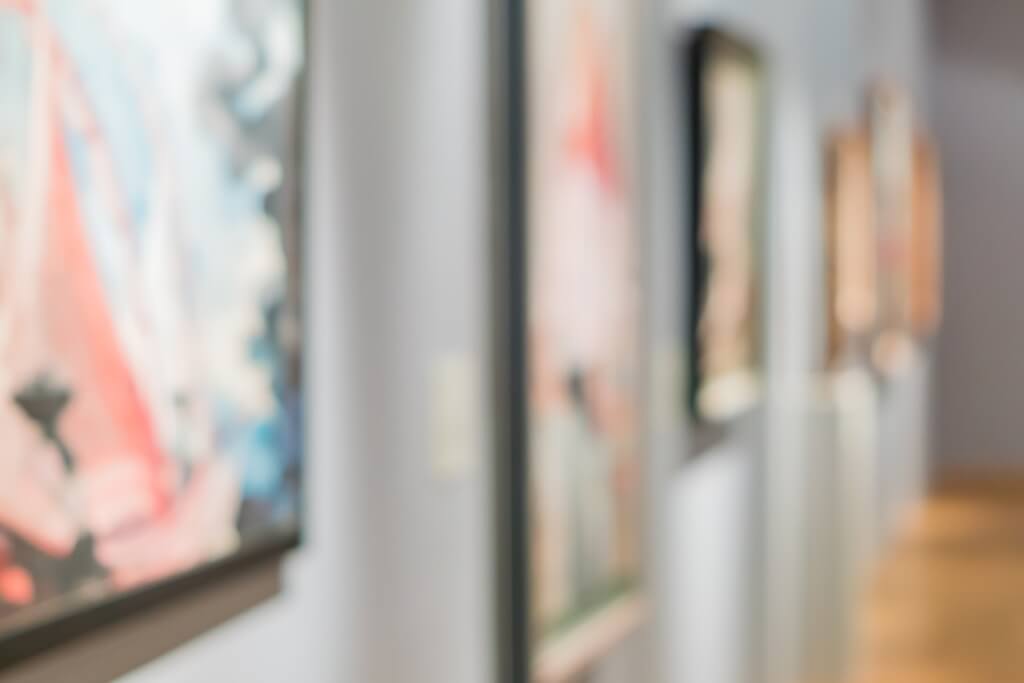Art collector Edik Natanov reveals the invisible side of his profession and explains how unwanted drawings by avant-garde Russian artists became a big hit of the last decades.
Malevich, Letunov, Popova, Kandinsky, Udaltsova, Lissitzky, Chagall and others. Even if you might not be an avid art admirer, the chances are you have heard these names. The Russian born New Yorker, Edik Natanov, has made these avant-garde artists a big part of his own life and has been collecting their works for about 30 years now. He doesn’t just keep them for his own enjoyment, he runs exhibits all over the world and sometimes even gets in trouble for it. He calls these adventures his adrenaline, and they certainly won’t stop him from sharing these masterpieces with the audience.

Photo: IStock
ForumDaily talked to Mr. Natanov, New York based art collector and the owner of a vast Russian avant-garde artwork collection who had already organized more than 10 exhibitions. We touched upon everything: how it all started and that the beginning was a pure accident, talked about the fact that we would never be able to fully comprehend an artist's vision and finally whether collecting art could be profitable.
Being a professional jeweler, how did you start collecting art?
In 1995 I received an inheritance from my grandfather. At that time I was living in Israel and my father brought me two works whose origins were completely unknown to us. So I went to Moscow to identify what we had. Surprisingly, it turned out those were the works by Nadezhda Udaltsova.
Then we had many meetings with the specialists from the Tretyakov Gallery in Russia and others. In particular the following people helped me shape my collection:
- Georgy Kovalenko, head at the research institute for the Russian Academy of Arts in the Department for Russian Art of the XNUMXth century; senior research fellow at the State Institute for Art Studies (Russia) in the Department for the Art of Central Europe. He holds a doctorate in art studies.
- Gleb Pospelov, profesor, honorary art scholar awarded by the Russian government, holds a doctorate in art studies.
- Valery Turchin, professor, academician at the Russian Academy of Arts, head of the Department for the Arts History Studies at Moscow State University, holds a doctorate in art studies.
- Anatoly Strigalev, PhD candidate in art sciences, researcher of Russian avant-garde art; the sole biographer of Vladimir Tatlin.
- Valery Golikov, Soviet and Russian biophysicist and biochemist, PhD candidate in biology, head of the Department for Historical and Traditional methods at Likhachev Russian Research Institute.
- Galina Demosfenova, Soviet and Russian art historian, PhD candidate in art sciences, specializes in Russian art history, design history, graphics and avant-garde art; honorary art scholar awarded by the Russian government, the president of Malevich Foundation.
- Irina Azizyan, art historian, architect, painter, PhD candidate in art studies, professor, member of the Artist’s Union and the Union of Architects of Russia, honorary architect awarded by the Russian government, adviser at the Russian Academy of Architecture and Construction Sciences (RAACS), Malevich Foundation expert and board member at the Russian Association for art historians.
- Lydia Gladkova, PhD candidate, chairwoman at the Department for Scientific Expertise at the Tretyakov Gallery, art historian with the council of experts for the Russian Antique Salon project.
- Maria Valyaeva, PhD candidate in art studies, senior research fellow at the Tretyakov Gallery, specializes in the avant-garde art in Russia.
- Svetlana Jafarova, art historian, honorary member at the Russian Academy of Arts, member at the Association of Art Historians in Russia, PhD candidate, expert in the avant-garde art in Russia.
- Elena Lyubavskaya, senior research fellow at the Tretyakov Gallery, PhD candidate in chemistry.
When we found out that my grandfather had several drawings by avant-garde artists from the 1910s - 1930s, we began building our collection. Throughout the process I heard many kind words for my family for keeping the drawings.
What an impressive list of experts. In spite of criticism in the media, it’s hard to question the authenticity of the works after it had been established by so many experts. However there are still some doubters.
These are not doubters, they are crooks who are trying to cover up their bad intentions with those doubts. But it’s all water under the bridge now. There is no point in bringing it up again.
All the experts working on my collection were world renowned specialists. Many of them are collaborating or used to collaborate, some of them have passed away, unfortunately, with the best museums in the world, including, for instance, Guggenheim Museum in New York. They have been providing their expert advice on avant-garde art and Russian art in general. So any doubts on authenticity of the artworks from my collection are unreasonable, to say the least.
How did it happen that your grandfather who was a teacher of Russian and literature in Uzbekistan became the owner of these drawings?
In the mid 1930s Stalin forbade avant-garde art, therefore avant-garde artists disappeared from museum’s collections. Stalin’s decree banning avant-garde art is still being kept at the museum in Samara city in Russia. Subsequently the drawings were kept at people’s homes. After the Second World War many from the Russian so called intelligentsia relocated to Central Asia and brought along the most valuable items. This is how avant-garde artwork found itself in Uzbekistan.
On the subject: The Solomon Guggenheim Museum: The Story Of The Founding Family, 'Non-Objective Art' And Guggenheim Museums Around The World
Could you explain to our readers the value of avant-garde Russian art?
All of these artworks were created in the 10s - 20s during the period of revolutions in science, society and arts. The Russian avant-garde was a symbol of revolt against the traditional academic art and drawing rules. It was meant to defy the conventional public taste. In early years of the Soviet Union avant-garde art was considered as something repugnant to public policy and interests. By the end of the 1930s this form of art was banned in the USSR, therefore it hasn't been present at exhibits for many decades. Until the 1980s no one had any interest in the movement and avant-garde works were literally worthless. Avant-garde artists pushed against the type of art that looked too realistic, claiming it to be some type of colored photographs which didn’t exist at the time, and the so-called classicism supporters rejected abstractionism. Traditional classical artists were clearly favored at the time.
Today we have come to realize the value and meaning of avant-garde art. Over the last 20 years the curiosity has been steadily growing. I have my way of feeling the time and their works, I know techniques they used to paint. For instance, Kazimir Malevich painted not just squares, crosses and zeros. He covered the canvas with one color first, then used another and all the layers combined revealed geometric figures. He worked gradually layer after layer. This is a very hard technique called suprematism. I think the most important thing is what the artist was feeling while painting.
I believe every artist had a plan. He or she was always aware of what the result needs to be, so they consciously steered to it. Nevertheless we also realize that we, the audience, can't imagine what was going through the artist’s mind at the time. I’m equally interested not just in the work of art but the story of its creation, the artist and his life. I studied the biography of every artist, how he or she had reached this point and what his/her life was like. I won’t be able to know for sure what one felt while creating any particular piece, but I can guess and that’s the best part for me, the moment of revelation and enlightenment.

Photo: IStock
What criteria do you use to add to your collection?
I haven’t added anything to my collection for a long time. I have enough drawings. And it’s enough hassle for me (laughing).
Speaking of hassle. You mentioned that avant-garde art was not valued for decades. Many creations were damaged. Does it take a lot of effort to restore?
I’m literally fussing over them. And probably much more than any museum does. Take for instance the work by Lubov Popova. We saved her painting when it was completely ruined. We restored it. I don’t allow drastic treatments, so that the piece remains at its most natural state. I follow the climate guidelines, all of the paintings are beautifully wrapped. If they need to be transported, I use only specialized transport, because it’s not just art, it is money as well.
People usually think that investment in artwork yields some income. Is that true?
I haven’t seen any income, only for losses and expenses. Maintenance, transportation expenses, my nerves.
What is the reason that makes you collect art then?
I enjoy the process. I have been collecting since 1995 and still like it. It’s not a business but a hobby. You can call it philanthropy, an attempt to show people something precious, give them access to something not easy to come around.
You may be interested in: top New York news, stories of our immigrants and helpful tips about life in the Big Apple - read it all on ForumDaily New York
Sounds fantastic. But it is still quite a difficult and risky hobby. You spend lots of time, money, nerves and effort. You travel through several borders with these paintings.
I have to admit, it can be quite scary and risky in all senses. You are perceived differently. They think: he is collecting art. So now I have to protect my house. And your own prospective changes, you start being cautious. That is exactly the reason why so few art collectors exhibit their collections. But I do, even though I know the risks. But it’s my adrenaline.
Read also on ForumDaily:
All-seeing eye on the dollar: a symbol of a secret order or just a good logo
The Metaverse Market: How People Spend Millions of Dollars on Houses and Lots That Don't Exist
Immigration after 40: stories of Russian-speakers who started a new life in America in adulthood
Subscribe to ForumDaily on Google NewsDo you want more important and interesting news about life in the USA and immigration to America? — support us donate! Also subscribe to our page Facebook. Select the “Priority in display” option and read us first. Also, don't forget to subscribe to our РєР ° РЅР ° Р »РІ Telegram and Instagram- there is a lot of interesting things there. And join thousands of readers ForumDaily New York — there you will find a lot of interesting and positive information about life in the metropolis.











